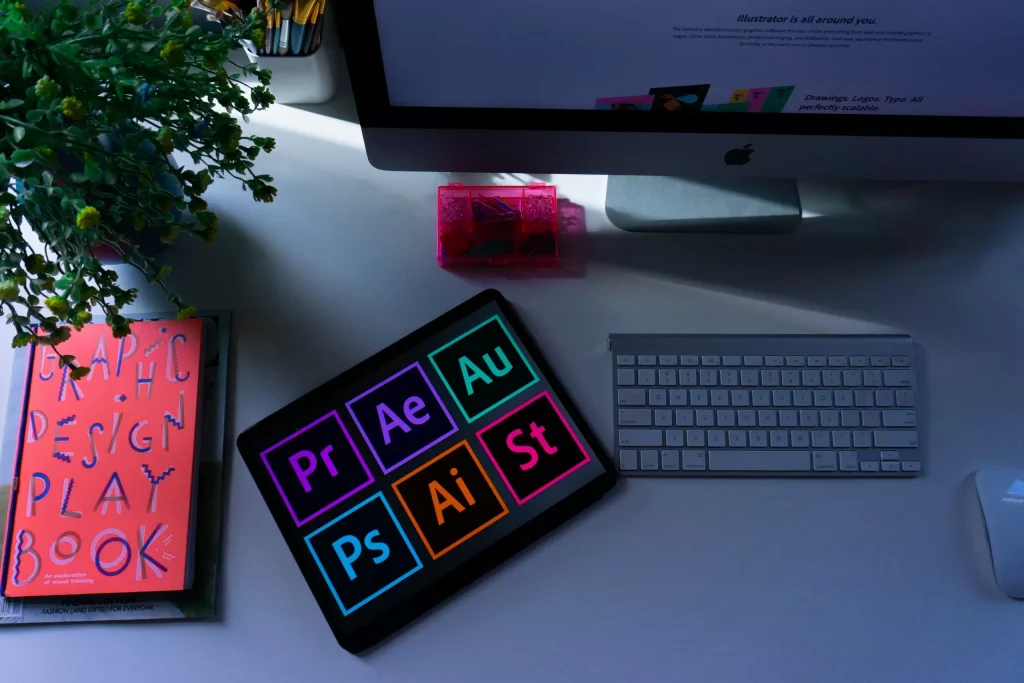
07.04.2022
Art and design are two principles that are genuinely confused. Art is free, subjective, might have more than one meaning, and asks questions; meanwhile, design is another world that responds to questions and fulfills certain needs. It’s crucial that a designer should master the design principles hereby be able to compete in responding to necessary questions in a more efficient way.
Today’s topic is about daily life encounters and quickly done color choices, in other words, Color Theory. Contrary to popular belief, designers conduct by certain rules in a more systematic way rather than using random cute colors together. Now it’s our time to analyze Color Theory in a systematic way.
The color theory combines art and science to determine which colors work the best with each other. The color wheel was invented in 1666 by Isaac Newton, who mapped the color spectrum onto a circle. Color theory is a must for all artists and designers because it’s a great deal of support for the creation process.
Primary Colours: Defined as the main color that can’t be created by two different colors added together. These colors are red, green and blue.
Secondary Colours: These are colors that result from mixing two primary colors. There are three of them which are green, purple, and orange.
Tertiary Colors are colors that are created by mixing primary and secondary colors.

You can think of primary and secondary colors as the “rainbow colors”. We have classified the colors, now it’s time to talk about tints which are frequently used in the design process.
I would like to start by highlighting the importance of using design programs in English. Not only help you to express your design process easily to the companies you work for but also learning new words and being exposed to a language every day would help you to improve your English. Long story short it’s a win by all means.
Let’s dig more about our main topic, all primary and secondary colors are defined as Hue. On the other hand, the shade you get when you add black to a tone is defined as Shade. The opposite of the shade, that is, when you add white to color, the color obtained is called Tint. Saturation is the addition of both black and white colors to create Tone. The hue and saturation we just mentioned mean the same thing, but when it comes to colors created in digital environments, saturation is more preferred.

1. Complementary: The use of two opposite colors on the color wheel.
2. Monochromatic: The use of any color and its 3 different values of it on the color wheel.
3. Analogous: The use of three colors that are nearby each other.
4. Triadic: The use of 3 colors evenly arranged on the color wheel. Red, blue, and green.
5. Tetradic: The use of 4 complementary colors that are equally spaced on the color wheel.
When you use the complementary color scheme, you get high contrast and an effective color combination. When these colors are used together, they provide a brighter and more catchy look. The monochromatic color scheme, on the other hand, allows you to achieve a harmonious appearance in your designs with its easy and effective use. When using an analogous color scheme, choose a dominant color, and it would be logical to use the rest of the colors to emphasize the color you choose. The Triadic color scheme allows you to achieve high contrast, although not as complementary. You get energetic color palettes when you use this scheme. You can use the tetradic color scheme to use one color as a dominant and the rest as a highlight. But be careful, the more colors in your palette, the harder it will be to balance.
Although the design is a very difficult and subjective process, you will realize how effective the designs you create in accordance with design principles are in finding answers to the questions asked. Colors profoundly affect the way your designs are perceived. For this reason, it is crucial to understand the relationship between colors, find the appropriate balance, and create a palette accordingly.
https://www.canva.com/colors/color-wheel/
https://thefutur.com/content/design
Perfist Blog
Similar Articles

Regularly monitoring the destination URLs of your Google Ads campaigns is one of the most effective ways to protect your ad budget. Broken or misdirected pages waste paid clicks, lower your Quality Score, and hurt your conversion rates. In this article we’ll walk you step-by-step through building an automation system that exports Google Ads destination […]
Read More
Senior Level Performance Marketing
In this guide, we will explain what a session is in Google Analytics 4 (GA4), why session duration matters, which session metrics are available, and how to configure these settings. What is a Session in GA4? A session represents the group of interactions a user has with your website or mobile app within a given […]
Read More
Beginner Level Web/App Analytics
What is GEO (Generative Engine Optimization)? GEO is a new generation optimization method that ensures content stands out in AI-supported search systems. It aims to produce content that can provide quick and clear answers to user questions. In addition to traditional SEO, a simple and understandable language that appeals to artificial intelligence is used. Why […]
Read More
Mid Level SEO
GEO is an optimization method developed to ensure that content is better understood and recommended by AI-powered search engines. Previously, when writing content, the goal was solely to rank high on Google. Now, however, AI systems read these contents and present summaries to users. This is exactly where GEO steps in. It ensures that content […]
Read More
Mid Level Content Marketing